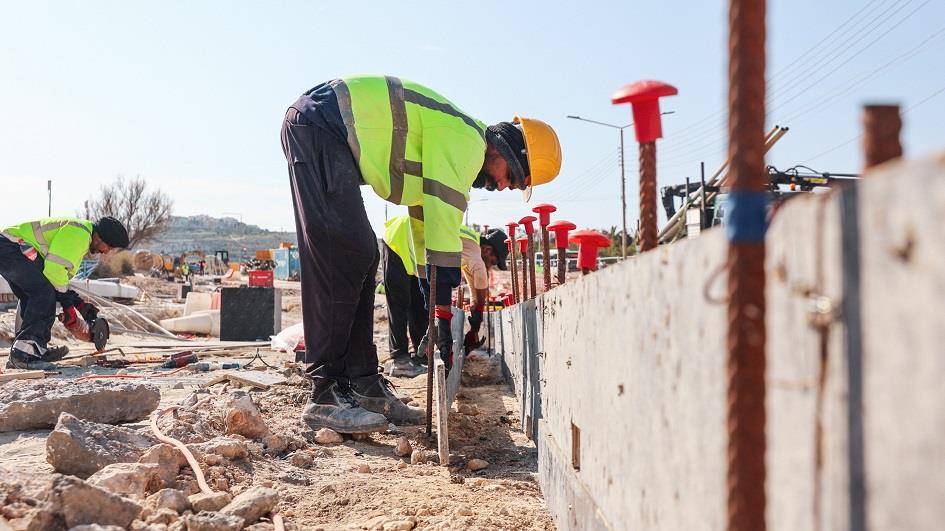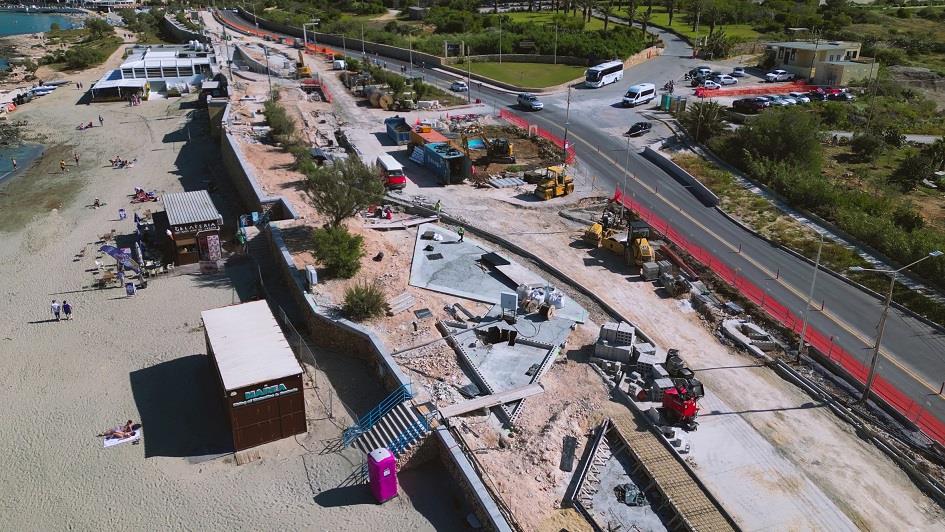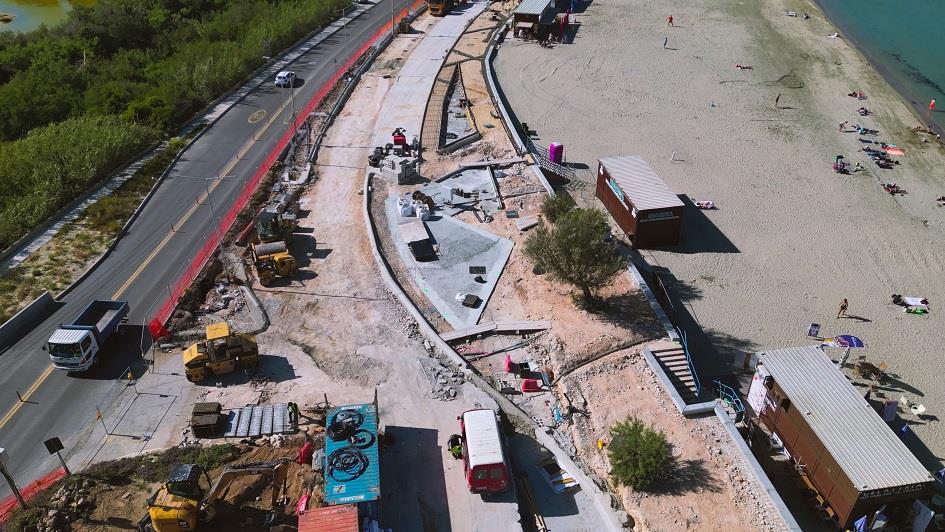The project in Triq il-Marfa, the main and only artery connecting Gozo and to the rest of Malta and commonly known as the Ghadira Road, is expected to be ready for the summer months, with the finishing touches to continue at the end of summer and be completed next year, Infrastructure Malta said today.
The project is designed to promote safer road use in an area prone to accidents, CEO of Infrastructure Malta Ivan Falzon told the media.
The road network in the area will be ready by June, but finishing touches are to be continued as from October, till March of the next year.
Speaking at a press conference on Tuesday morning, Falzon gave details of the €8 million investment which started in January of last year, and involved the collaboration of three main entities, the Water Services Corporation (WSC), Infrastructure Malta (IM) and the Malta Tourism Authority (MTA).
Works on the northbound road, leading to the Gozo ferry, started on 5 January and were completed by 28 May. The main transfer of the water from the reverse osmosis system from Cirkewwa was done in this phase, working with the WSC.

The southbound road, which is the road leading from Cirkewwa towards Mellieha, along the Ghadira bay, started on 3 October 2022 and should be completed in time for the busy summer months. The second part of the project is the upgrade of the promenade, mainly involved the MTA.
Falzon said that the project was a complex one due to the many difficulties faced during works, as well as space limitations, lack of parking, and taking into account dangers in the road.
He said that the area did not have the basic needs one expects in such a popular area, which attracts around 2 million tourists and locals in the peak of summer. These were parking according to standards, pavements and an adequate bus base.

Falzon said that the issue of safety came into place when designing the project, as buses were stopping to board passengers in the main flow of traffic.
Moreover, many were parking on a shoulder of the northbound side of the road, which Falzon said has now been transferred to the southbound lane, to protect people from having to cross to the other side, as well as walking alongside the busy road.
“People have died there. Major accidents have happened,” he said.
The new road will consist of two continuous lanes on the northbound road, and one on the Southbound along the bay. A central barrier will separate the lanes, Head of Design of the project Architect Robert Zerafa said.

The speed limit in the area will also be reduced to 50km/hr, with the road constructed in such a way that there is no longer a wide open road, and drivers will have to slow down.
Since all main activity happens along the bay, 130 parking spaces were moved entirely along the southbound road, designed along the bay. Entry and exit from the parking area will not disrupt the main flow of traffic, with ample space to reverse and exit into the main road.
Zerafa said that improvements to crossings were also made, putting a priority on mobility, with a minimum of 1.2 or 1.3 metres of pavement along the entire route.
Vehicles coming from Armier can join the main route without participating in the roundabout, with a slip road being constructed, Zerafa said.
A tidal lane was also constructed in the main route to Gozo in the central strip, so that traffic can be diverted.

Architect Rebecca Grech said that the project was one of the most challenging, as it a main artery with no replacement. She said that the works have to be done in a logistic way as it cannot be closed completely.
Architect Albert Spiteri said that many issues were faced during the works, such as water and rain flooding works in the road, as well as sand disrupting the works.
The issue of space was also challenging, deciding to keep the northbound road as a two-lane road, due to increased traffic from Malta to Gozo. A lane had to be sacrificed for the southbound road due to safety issues, and traffic from Gozo is estimated to be around 120 cars per 30 minutes, coming from the ferry.